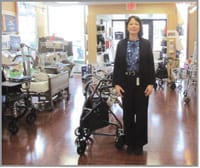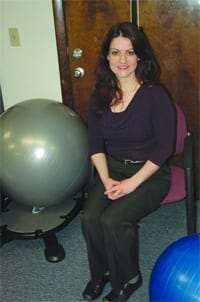Tooth of the Matter – Oral Health and Bone Disease Are Connected in Many Ways
Osteoporosis and tooth loss are health concerns that affect many older men and women. Osteoporosis is a condition in which the bones become less dense and more likely to fracture. This disease can affect any bone in the body, although the bones in the hip, spine, and wrist are affected most often. In the U.S., more than 40 million people either already have osteoporosis or are at high risk due to low bone mass.
Research suggests a link between osteoporosis and bone loss in the jaw. The bone in the jaw supports and anchors the teeth. When the jawbone becomes less dense, tooth loss can occur, a common occurrence in older adults. Tooth loss affects approximately one-third of adults age 65 and older.
The portion of the jawbone that supports our teeth is known as the alveolar process. Several studies have found a link between the loss of alveolar bone and an increase in loose teeth and tooth loss. Women with osteoporosis are three times more likely to have tooth loss than those without the disease.
Low bone density in the jaw can result in other dental problems as well. For example, older women with osteoporosis may be more likely to have difficulty with loose or ill-fitting dentures and may have less optimal outcomes from oral surgical procedures.
Periodontal Disease and Bone Health
Periodontitis is a chronic infection that affects the gums and the bones that support the teeth. Bacteria and the body’s own immune system break down the bone and connective tissue that hold teeth in place. Teeth may eventually become loose, fall out, or have to be removed.
Although tooth loss is a well-documented consequence of periodontitis, the relationship between periodontitis and skeletal bone density is less clear. Some studies have found a strong and direct relationship among bone loss, periodontitis, and tooth loss. It is possible that the loss of alveolar bone mineral density leaves bone more susceptible to periodontal bacteria, increasing the risk for periodontitis and tooth loss.
Research supported by the National Institute of Arthritis and Musculoskeletal and Skin Diseases suggests that dental X-rays may be used as a screening tool for osteoporosis. Researchers found that dental X-rays were highly effective in distinguishing people with osteoporosis from those with normal bone density.
Because many people see their dentist more regularly than their doctor, dentists are in a unique position to help identify people with low bone density and encourage them to talk to their doctors about their bone health. Dental concerns that may indicate low bone density include loose teeth, gums detaching from the teeth or receding gums, and ill-fitting or loose dentures.
It is not known whether osteoporosis treatments have the same beneficial effect on oral health as they do on other bones in the skeleton. Additional research is needed to fully clarify the relationship between osteoporosis and oral bone loss; however, scientists are hopeful that efforts to optimize skeletal bone density will have a favorable impact on dental health.
Bisphosphonates, a group of medications available for the treatment of osteoporosis, have been linked to the development of osteonecrosis of the jaw (ONJ), which is cause for concern. The risk of ONJ has been greatest in patients receiving large doses of intravenous bisphosphonates, a therapy used to treat cancer. The occurrence of ONJ is rare in individuals taking oral forms of the medication for osteoporosis treatment.
Advice for Healthy Bones
A healthy lifestyle can be critically important for keeping bones strong. You can take many important steps to optimize your bone health. For example:
• Eat a well-balanced diet rich in calcium and vitamin D.
• Engage in regular physical activity or exercise. Weight-bearing activities — such as walking, jogging, dancing, and weight training — are best for keeping bones strong.
• Don’t smoke, and limit alcohol intake.
• Report any problems with loose teeth, detached or receding gums, or loose or ill-fitting dentures to your dentist and your doctor.
This article was prepared by the Osteoporosis and Related Bone Diseases National Resource Center, a division of the National Institutes of Health.



